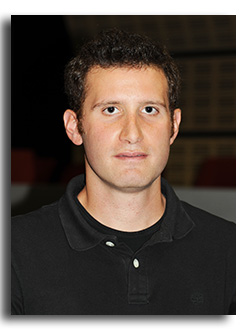
Abstract
Sunlight-driven water splitting in photoelectrochemical (PEC) cells is an attractive method for direct solar-to-fuel energy conversion. Hematite (Fe2O3), also known as rust, is a promising light absorber for PEC cells despite its non-optimal optoelectronic properties. An interesting strategy to improve its energy conversion efficiency is functionalization with metallic nanoparticles supporting localized surface plasmon resonances.
In this talk, the beneficial effect of metallic nanodisks on the performance of photoanodes based on ultra-thin hematite films are presented and discussed. Experiments and calculations are combined to investigate – and partly elucidate - the mechanisms behind the observed improvement [1,2]. Moreover, measurements of the faradaic efficiency of water splitting on the surface of hematite are presented [3].
Click here to see all available video seminars.
Click here to go to the SPREE HOMEPAGE.
Brief Bio
Beniamino Iandolo obtained a Bachelor degree in Engineering Physics from Politecnico di Milano (Italy) in 2007 and a Master degree in the same subject, from Politecnico di Milano, in 2009. Beniamino performed the work for MSc thesis at Chalmers University of Technology, Göteborg (Sweden), during a one year exchange project between 2008 and 2009.
Applied Physics department as PhD student. He is currently involved in a research project in the area of sustainable hydrogen production from water and sunlight. His research focus is on
In 2010 I returned to Chalmers to join the understanding and improving the photoelectrochemical (PEC) properties of hematite (a-Fe2O3), a promising light absorber for PEC cells.
References
[1] B. Iandolo and M. Zäch, Aust. J. Chem., 2012, 65, 633–637. [2] B. Iandolo, T. J. Antosiewicz, A. Hellman and I. Zorić, PCCP, 2013, DOI: 10.1039/c3cp44483j. [3] B. Iandolo et al., In preparation
